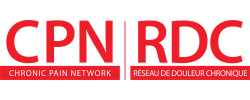| Return |
Patient Evidence Summary

Doctor, I am a woman with pelvic pain. Is physiotherapy helpful for treating this condition?
Both physiotherapy and topical lidocaine treatments improve pelvic pain due to vestibulodynia. Physiotherapy helped more people and reduced pain scores more than lidocaine treatments.
What is the evidence?
SUMMARY OF FINDINGS
Physiotherapy versus lidocaine treatments
| Outcome | Physiotherapy | Lidocaine | Effect |
|---|---|---|---|
Pain intensity score* after treatment | Dropped by 4.6 points (from 7.3 to 2.7) | Dropped by 2.8 points (from 7.3 to 4.5) | People who received physiotherapy had an average drop in their pain intensity scores by 1.8 points more than people treated with lidocaine |
Pain intensity score* at 6 months | Dropped by 4.3 points (from 7.3 to 3.0) | Dropped by 2.5 points (from 7.3 to 4.8) | People who received physiotherapy had an average drop in their pain intensity scores by 1.8 points more than people treated with lidocaine |
| Satisfaction score** after treatment | 8.9 out of 10 | 5.6 out of 10 | People who received physiotherapy were more likely to be satisfied with treatment |
| Satisfaction score** at 6 months | 8.5 out of 10 | 5.2 out of 10 | People who received physiotherapy were more likely to be satisfied with treatment |
| Proportion of participants reporting Very much improved or Much improved after treatment | 74% | 37% | About 37 more people out of 100 who received physiotherapy reported much improvement after treatment |
*pain intensity during intercourse rated from 0 (no pain) to 10 (worst possible pain); a drop of 1.5 points is a change that most people would notice
**Satisfaction score = 0 (completely dissatisfied) to 10 (completely satisfied)
What kind of study was this?
This was a randomized controlled trial (RCT).
Who? This study included 212 women age 18 to 45 years (average age 22 years) who had never been pregnant and reported pain during sexual intercourse due to vestibulodynia for longer than 6 months of at least moderate intensity (5 or higher out of pain scale of 10). People with other pelvic pain conditions or who had received physiotherapy or lidocaine treatments in the past were excluded.
What? The study compared physiotherapy with lidocaine treatments.
Physiotherapy | vs | Lidocaine Treatments |
|---|---|---|
10 weeks of 1-hour sessions by certified physiotherapists who specialized in women's health: including manual therapy techniques, vulvar desentization, myofascial release, and pelvic floor muscle exercises with biofeedback. A home exercise program of pelvic floor contractions (5 times per week) and stretching exercises (3 times per week). Education about chronic pain management, how muscles work, and sexual functioning | Application of a lidocaine (5%) ointment (topical) at the opening to the vagina at bedtime and a small gauze with ointment was left in the area for continuous contact for 8 hours overnight. |
Why was this research done?
Vestibulodynia is a common cause of female pelvic pain that can affect a person's well-being and sexual function. Researchers wanted to know if physiotherapy would be as good as topical lidocaine for treating this type of pain. The results showed that both physiotherapy and lidocaine treatments reduced pain at 6 months. However, physiotherapy helped more people and showed a greater average reduction in pain intensity.
This Evidence Summary is based on the following article:
Morin M, Dumoulin C, Bergeron S, et al. Multimodal physical therapy versus topical lidocaine for provoked vestibulodynia: a multicenter, randomized trial. Am J Obstet Gynecol. 2021 Feb;224(2):189.e1-189.e12. doi: 10.1016/j.ajog.2020.08.038. Epub 2020 Aug 18. PubMed
Published: Sunday, May 23, 2021
Last Updated: Tuesday, July 13, 2021
Please note that the information contained herein is not to be interpreted as an alternative to medical advice from a professional healthcare provider. If you have any questions about any medical matter, you should consult your professional healthcare providers, and should never delay seeking medical advice, disregard medical advice or discontinue medication based on information provided here.
|
This Evidence Summary was printed from the PAIN+ CPN website on 2025/04/01. To view other Evidence Summaries or to register to receive email notifications about new Evidence Summaries, please visit us at https://www.painpluscpn.ca/Articles/EvidenceSummaries |

|






 , McMaster University
, McMaster University